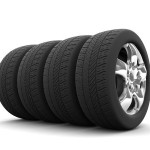Easy Tips For Choosing the Right Winter Tires for Your Vehicle
New York State can have fierce winter weather conditions. These weather conditions bring the need for extra protection on the road. Driving with all-season tires on your cars puts you at risk for getting stuck in the snow and losing control of your car while operating it during adverse weather conditions.
Putting winter tires on your car gives you increased protection when there is ice, snow, sleet, or low temperatures. These tires are often used instead of putting snow chains on tires. Before you purchase these specialty tires, learn about them so you will be well-informed when you shop.
Learn the anatomy of a tire. The parts of a tire include:
- Tread
- Sidewall
- Body plies
- Inner liner
- Steel belts
- Edge cover
- Bead Bundle
The body is a tire is comprised of layers of different fibers called plies. These plies run perpendicular to the tire’s tread. The number of plies describes a tire’s strength. The sidewall forms the outer side of a tire. It assist in keeping air in the tires and acts as a safety device for the plies. The components are put together using a tire machine that manufactures a tire according to its specifications.
When you are looking for winter tires, look for the letter and number combination. A tire with the combination P225/50R16 91S indicates the tires are mostly used for passenger tires, hence the letter “P”. The “225” is the millimeter measurement for the tire’s width wheel. The “50” is the tire’s section height.
Once you have garnered this information, learn about the benefits of snow tires. The tread is the rubber on the exterior part of a tire that makes contact with road surfaces. Grooves are cut into this rubber to allow water to pass through without causing the vehicle to hydroplane.
On snow tires, these grooves are deeper. The goal of all-season tires is to provide longevity while snow tires aim to provide extra protection on the road.


